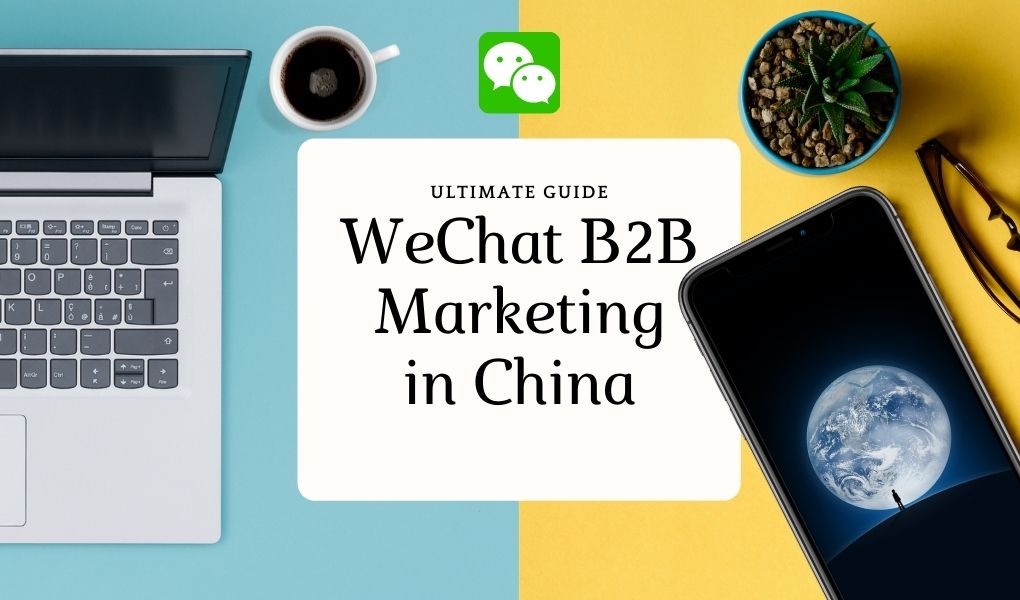How to sell to Integrated Circuit factories in China

How to sell to Integrated Circuit factories in China
What does the Chinese Integrated Circuit market look like?
Cost-Effective Agency
KPI and Results focused. We are the most visible Marketing Agency for China. Not because of huge spending but because of our SMART Strategies. Let us help you with: E-Commerce, Search Engine Optimization, Advertising, Weibo, WeChat, WeChat Store & PR.
It’s huge!
In 2022, the sales revenue of integrated circuits is likely to reach an astonishing 1,200 billion RMB of sales revenues in China.
In 2018 China held more the 54% of the market, followed by Taiwan, South Korea, and Japan.
China clearly dominates worldwide PCB production. In 2018 the country held no less than almost ¾ of the market share of 4L RPCB and almost 2/3 of the HDI market share.
The country has more than 2,600 PCB manufacturing businesses and employs around 750,000 people.
Shanghai and Guangzhou concentrating production on PCBA Pearl river delta and Yangtse river delta. The top 10 PCB manufacturers are located in Shenzhen or Guangzhou:
- PCBWAY
- A Tech circuits
- Hi-Tech circuits
- PCBGoGo
- Moko Technologies
- Agile Circuits
- HuanYu
- PCBMay
- ALLPCB
- ChinaPCBOne
What about the chips?
What costs more in PCBA production is certainly the electronic components, around 70% of the total cost.
China consumes more than ¾ of the total production of worldwide semiconductors. In 2021 imported $167.8 billion worth of semiconductors from major producers: Korea (53.8% of their import), Taiwan (31.22%), USA (7.92%), and Japan (6.97%).

China
In 2021-2022 China’s semiconductors export value stands at $52.5 billion, but produces simple chips with low technological value for automotive, appliances, and consumer goods.
The fact is that China is highly dependent on the biggest manufacturers of advanced technology microchips like South Korea and the USA.
Read more
A cold war on technology is around the corner
China’s rising development of AI, advanced manufacturing, EV, IoT, and 5G…is at the heart of China’s strategic technological development.
Unfortunately for China, the recent CHIP ACT passed by the US Government in August 2022 might is likely to mark a significant slowdown of China’s high technologies, very reliant on advanced microchips from the American manufacturer.
With this CHIP ACT, the USA aims to relocate all the American advanced microchips factories back to the USA. Recently the US government imposed severe restrictions, banning American advanced semiconductors manufacturers to sell to the Chinese. But also forbidding American citizens to work for chip manufacturers in China.
Washington aims to try to obstruct Chinese technological military development relying on AI and supercomputing, which need very advanced semiconductors technologies like the ones produced by the USA.
Read more
The biggest producer of semiconductors worldwide
Adding Taiwan to the picture
Geopolitical tensions are increasing between USA and China. And the visit of Pelosi to Taiwan last August ignites even more these tensions.
Taiwan is the biggest producer of semiconductors worldwide, accounting for more than 50% of the global market. TSMC is the biggest Taiwanese producer that supplies big American companies like Apple, AMD, NVIDIA…Taiwan represents an essential partner for America’s biggest companies.
No wonder the USA takes a position on the long conflict between China and Taiwan.
In October, Xi Jinping (Chinese president) stressed that China will “continue to strive for peaceful reunification,” with Taiwan, but he also stated that they reserved the right to use force and “all measures necessary.”
Earlier this year, even before the CHIP ACT was passed, the will for China to become more self-sufficient in the critical industry has been highlighted by the announcement of ByteDance’s (TikTok) willingness to manufacture their own chips to solve increasing difficulties to source.
The big picture is being drawn, despite the coming difficulties, Chinese Integrated Circuit factories are likely to need to diversify their procurement, leading to new market opportunities for foreign companies willing to sell in China.
How to reach and sell to Chinese Integrated Circuit factories?

Big spoiler alert: the key to reaching Chinese Integrated Circuit factories, will lie in your online presence on the Chinese internet.
Chinese buyers in the industry will not wait for the perfect supplier to knock on the door.
Save yourself from boring massive phone calls or relentless e-mailing campaigns in China.
For the simple reason that it won’t work.
Chinese buyers don’t answer commercial calls.
And, most buyers don’t use e-mails anymore, they stay up to the page with WeChat.
Adapt or die, is the motto of China
Don’t copy-paste randomly your current strategy applied in a certain area to the Chinese market. Don’t rush headfirst or you will be very likely to fail.
The fact is that purchase patterns differ here from other countries.
If you don’t adapt, it won’t work.
The good news is that success is accessible
All you need is to use common sense and understand Chinese buyers’ environment and reflexes, adapt to it, and surf on it.
Here are key takeaways:
- Be visible online
- Buyers do their own research when they have to source supplies for their production.
- They want things and information to be easy to find and identify.
- So, let’s say that if they need some computer chip, they will check on the internet to find the reference they need.
- They will contact the suppliers and the first 10 sites and send the request to get a quote. It is that simple.
- The Chinese internet is unique
How would you react if we’d say that you can have no longer access to Google, Facebook, Instagram, Twitter, and LinkedIn? You’d probably be panicked.
Well, in China it is a reality.
Chinese buyers don’t have access to these platforms. So, if you were counting on these platforms to reach them, your plans need to change asap.
China has its own internet system. Instead of Google, they have Baidu, instead of Facebook they have Wechat, instead of Twitter they have Weibo…
- Your first move: having a dedicated website
- To be visible on Baidu (the Chinese Google), you have to adapt to its specificities.
- It means having a website in Chinese, located in China, and submitted to Baidu.
- If buyers can access your website in China and in Chinese you are one step ahead of success.
- You must be well referenced
Remember, Chinese buyers will take the first website only appearing in their research.
To allow your website to rank among the first results and start to receive RFQ from the Integrated Circuit factories, you have to be among the first.
SEO (search engine optimization) is the strategy of using keywords to improve your website’s ranking. The better you will rank the more you will receive requests from potential buyers. This strategy takes months to implement and to get wanted results. But if the job is done right, you will attract all the requests from the Chinese big industry. Your dreams of receiving hundreds of leads per month will become your new reality.
Read more
So, now you received tons of leads, but you still haven’t converted them into clients?
Rest assured; it does not necessarily mean that you have a bad sales team.
It Is very likely because your reputation in China doesn’t exist.
Unfortunately, the Chinese market is flooded with fakes and counterfeit products.
So, even though you sent competitive quotations to your prospects, it is not enough.
To make sure that you are a reliable supplier, the buyers will check online if they can find information confirming that they can trust you.
They may have received your quote but found no info about your company in China, and simply decided not to take the risk to cooperate with you.
To build your reputation on the Chinese internet, you have to be where the buyers search. Buyers will try to find reviews from their peers on specialized forums or in the specialized online press.
This is where lies the main key to transforming your prospects into clients.
You will see that once you got articles in online media and good reviews on forums, you will start to convert your leads into clients.
The importance of nurturing with the social media

It may sound odd for a B2B business to go on social media to nurture its prospects, but not in China.
Indeed, told you that the email is barely used. Wechat has become over the last decade the favorite mean of communication for every people in China, privately and professionally.
Not having a WeChat account in China, will only show that you know very little about the Chinese market and are not ready for it.
When people find you on your website, their first reflex will be to look for your WeChat account and add it.
It is not only important to keep in touch with your company to send you RFQ, but it is also the new way to replace the traditional newsletter, and share your brochure and product catalog….
Read more
In addition, as we see an increasing number of young buyers in China, it is becoming more and more common for industrial companies to promote their products and know-how on platforms like Weibo and Douyin (TikTok), initially used for mass-market products. Companies share short videos explaining how to use their products or general educative videos to share knowledge about their industry.
For example, Jiujin Technologies, a Chinese company manufacturing measuring instruments for integrated circuits, shared a video explaining the difference between PCB and PCBA on its Douyin account.
The trend is accelerating and helps industrial companies to create awareness around their companies, helping reinforce their image of expertise, and nurture potential (young) buyers in their field.
Read more
Read more






Super interesting deep insight. We share it on our Facebook business group FYI
https://www.facebook.com/groups/156857008078680